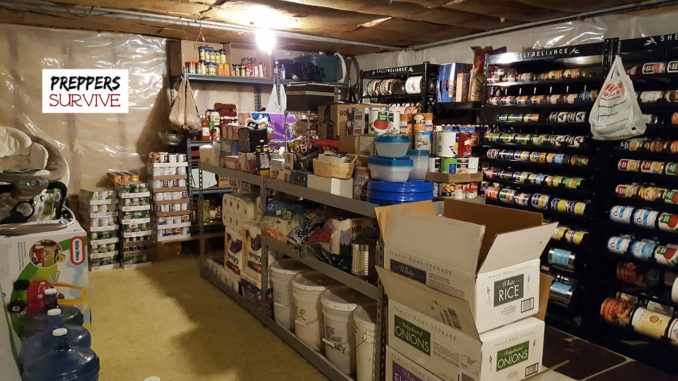
A prepper pantry is an area of a home that is stocked with food staples such as canned foods and dried foods (oats, flour, freeze-dried strawberries, etc). Its purpose is to feed a person or family for weeks, months, or even years without the need to go to a store. This is NOT the norm in the United States. The average American family goes grocery shopping six times a month.
It is common for a family to have about a week’s worth of food in their fridge, freezer, and kitchen cupboards. However, there are people who choose to buy a little extra each month so they, too can have a prepper pantry. Buying a little extra food monthly can be done on almost any budget.
In the poorest communities around the world, adults go to work and get paid at the end of the day; only then can they buy food with their earnings. Nonprofit organizations educate these families on how to build up food storage. The family takes a very small portion of dry rice or pasta that they would normally eat and adds it to a repurposed two-liter soda bottle, and then cooks the rest for their meal. Doing this small act every day would eventually fill up the two-liter bottle, giving them some food storage.
My idea in writing this article is to show real examples of a prepper pantry. We all have different budgets, skill sets, needs, and square footage in our homes. I feel lucky to know preparedness-minded people and thought you might enjoy seeing the differences in how others create their prepper pantry. Hopefully, you will be inspired with ideas on how you can develop a prepper pantry in your home.
Prepper Pantry Pictures
#1 Prepper Pantry
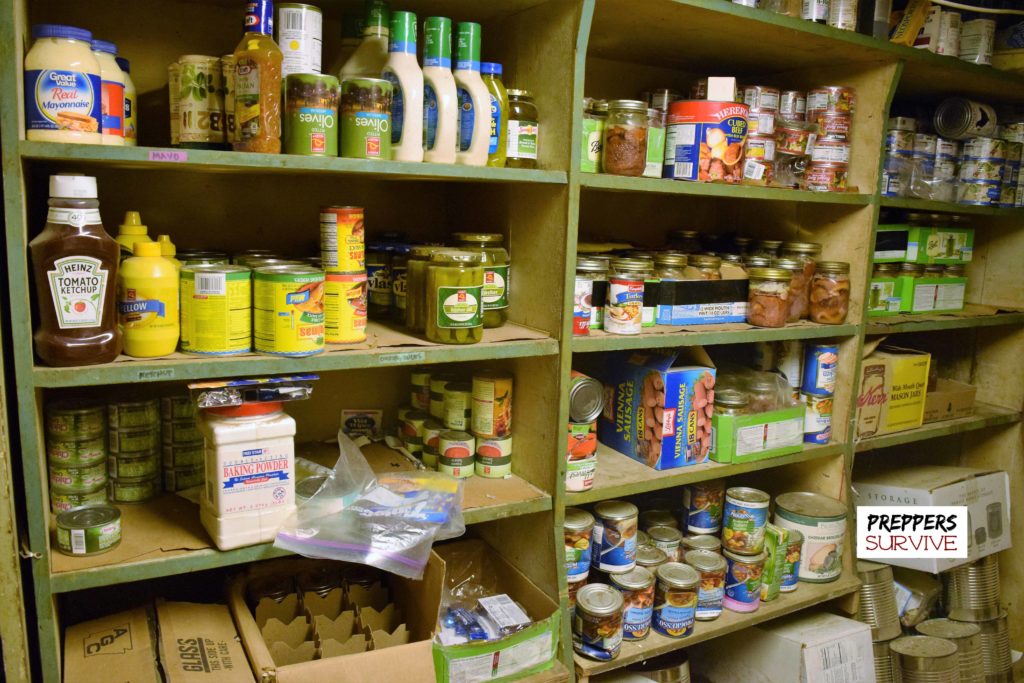
In the photo above, you may have noticed that the canned food is stored upside down. The reason for this is when dust falls, it will collect on the bottom of the can. Some basements have problems with rodents that scurry over the tops of cans. When it’s time to use the canned food, it’s flipped over and opened.
#2
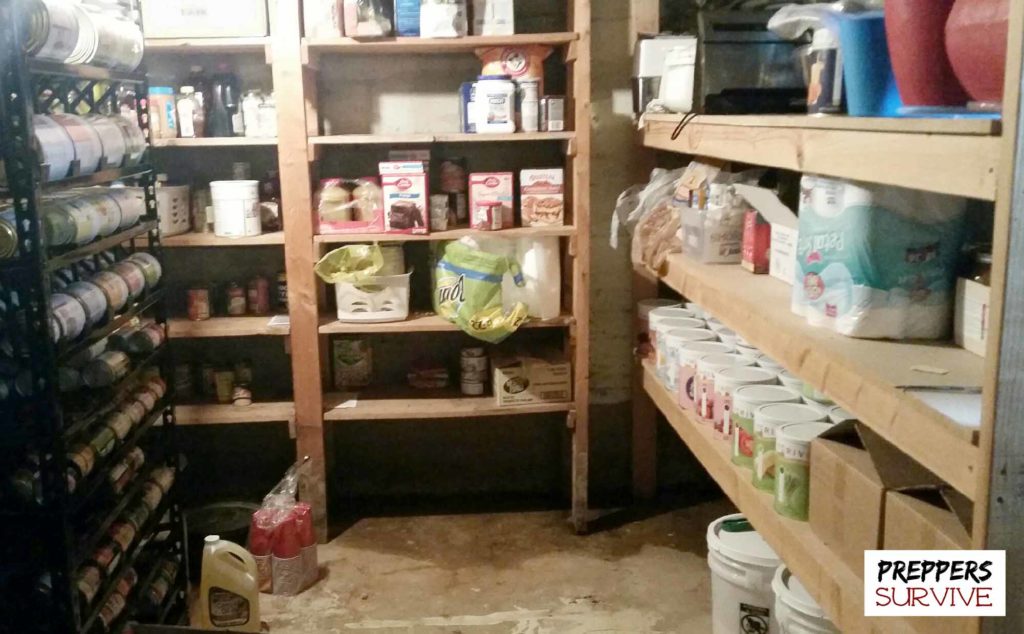
In the photo above, you may have noticed that the plastic buckets are stored at the bottom of the shelving, and the cans are stored above. This protects the food storage from water that leaks into the basement.
#3

The rail (plastic pipe) that you see in the photo above is to protect the food from falling in the event of an earthquake. Stock up on the items you and your family enjoy eating.
#4
Shelving makes it easier to rotate, organize, and access your food storage. The shelving in the photo above is one of the simplest and cheapest Do-It-Yourself projects.
#5 Prepper Pantry
You don’t need a basement or extra bedroom to start a food storage pantry. The photo above is of a large hallway lined with storage cabinets.
#6

Can you spot the long-term food storage? It’s important to know the difference and have a good variety. There are 3 major categories of food storage. They are short-term, long-term, and emergency water supply. How long does water keep in a 5-gallon jug
#7
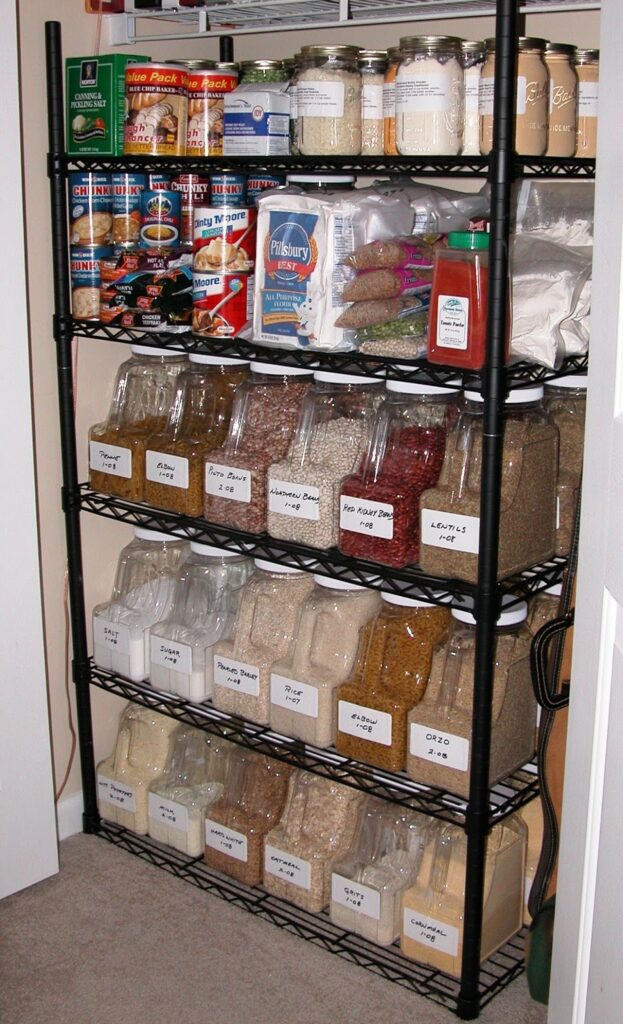
Having a plan, finding a space, and organizing the food are the first three steps to building a prepper pantry. The photo is shelving in a bedroom closet. For great tips on food storage containers, visit Living Prepared.
#8
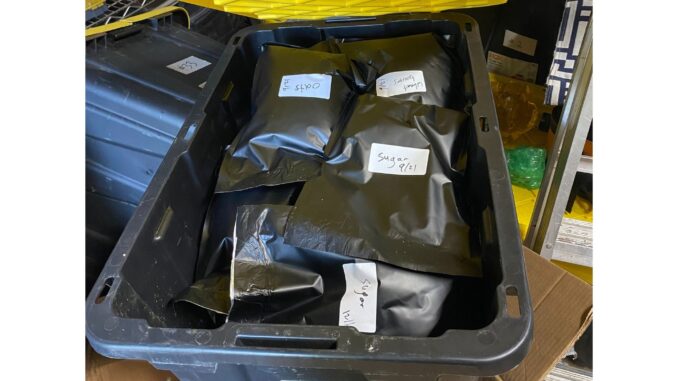
It’s not sexy, but it may be worth its weight in gold if food prices continue to rise. One of the ugly truths about food storage is that rodents and bugs love it! Make sure to store food in containers that will protect it from critters. For more information about using vacuum-sealed bags visit Rogue Preparedness.
#9
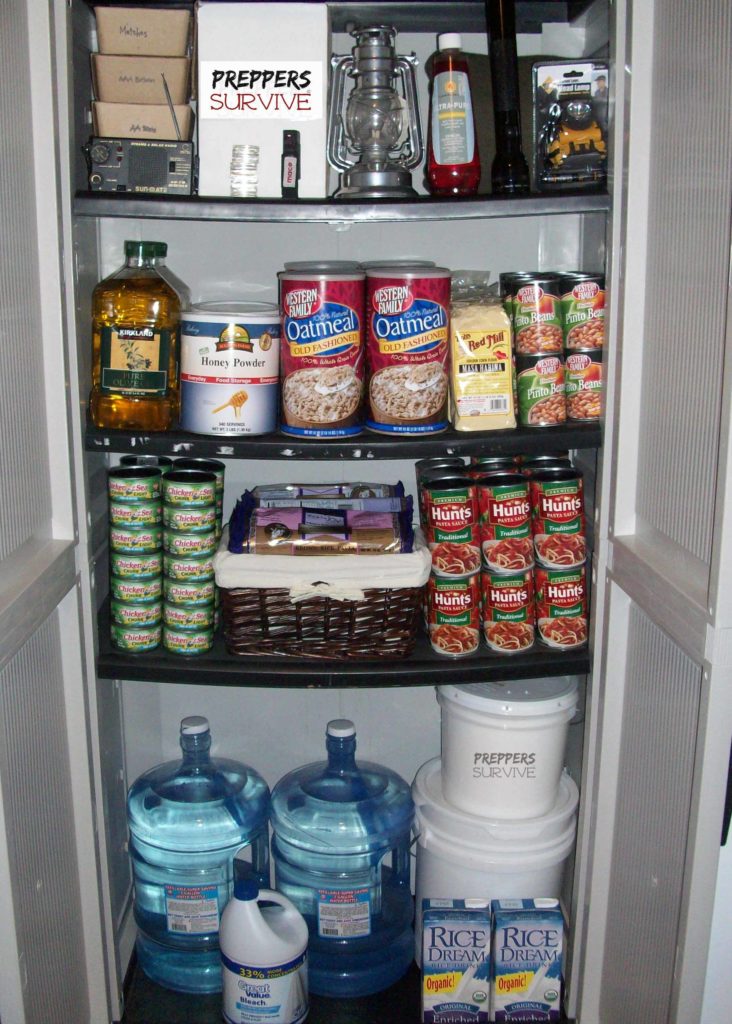
Throughout history, there have been times food was plentiful and times of scarcity. Some U.S. cities are already being labeled food deserts. Start with a meal plan and a prepper’s cookbook. Find recipes that your family would enjoy. Only add items to your food storage once you know that it is something they would happily eat.
#10 Prepper Pantry
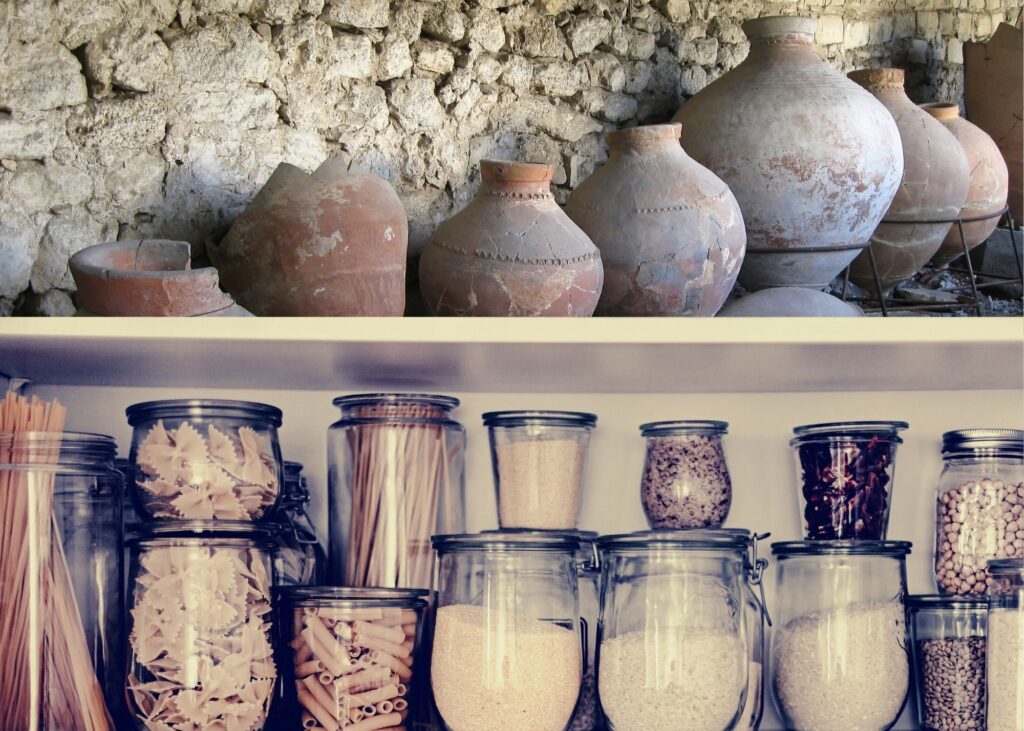
To protect and prolong the shelf-life of food in a prepper pantry, pick a location that is cool and dry. Store dried food in air-tight sealed containers. Educate yourself on signs that canned food has gone bad.
#11
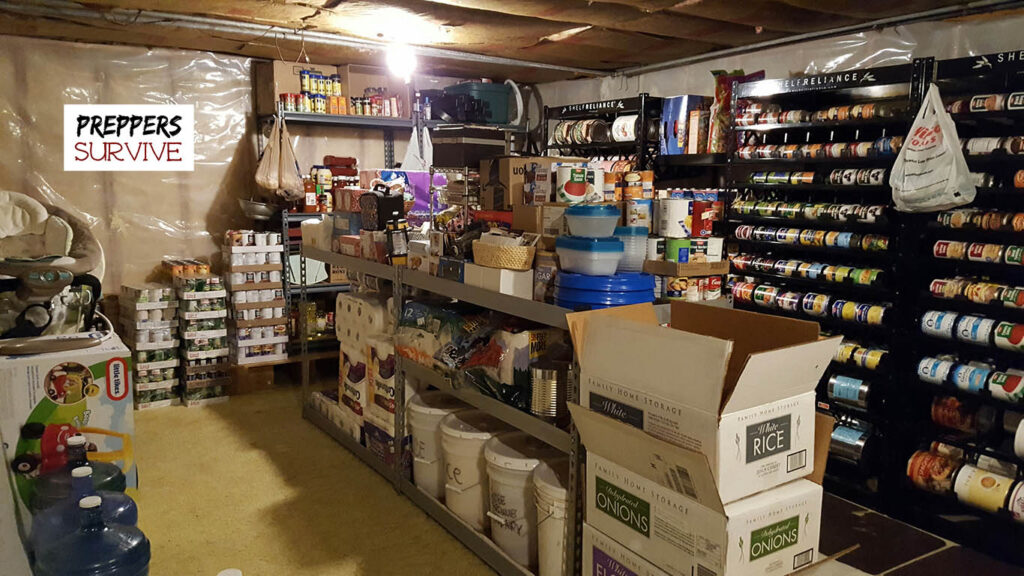
Rome was not built in a month. Don’t expect a well-organized, fully stocked prepper pantry to materialize in a month, either. It may start with buying a few extra cans of food each week, then develop into having a variety of grains and vegetables, and potentially grow into a food pantry that can feed your family for a year.
#12
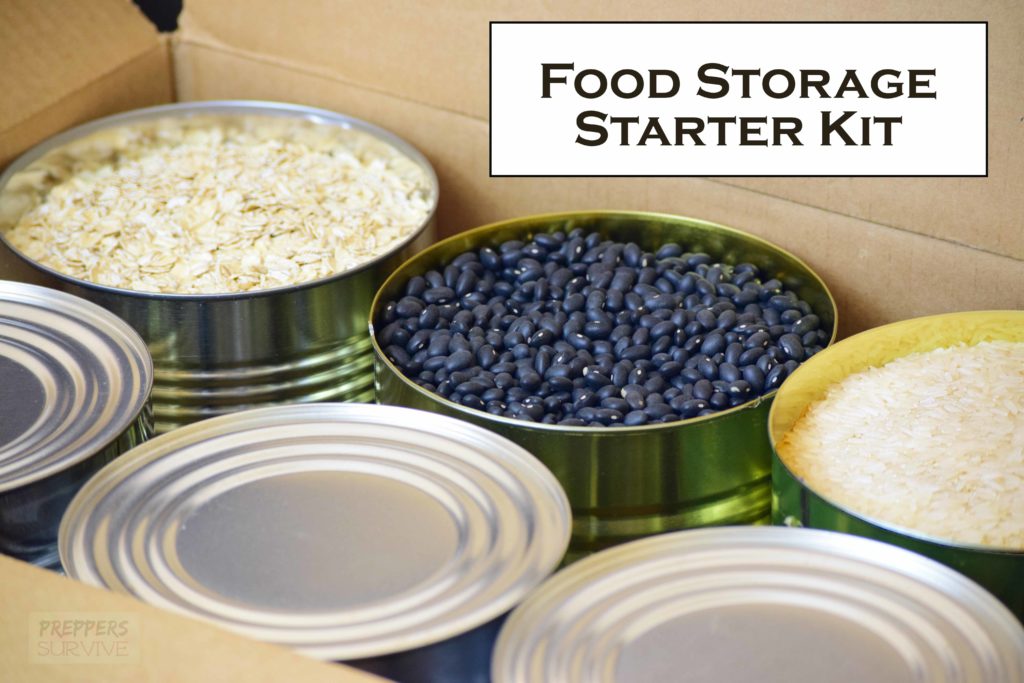
This is a humble prepper pantry for a single person. You don’t need a large room with wall-to-wall food if you are prepping for a party of one. In this example, it can be stored under a bed, in a closet, or in the kitchen cupboards. It’s called a food storage starter kit because it has a variety of food staples that can provide a basic serving of food for breakfast, lunch, or dinner. However, if you want a yummy meal instead of just a humble portion of food, then you’ll need to add more ingredients to your food storage.
Dry food storage, if stored correctly, can last 20+ years. Items such as:
- rice
- oats
- flour
- beans
- lentils
- pasta
Getting started on a prepper pantry is easier than you might think. Six #10 cans of dry food storage could feed one person 3 simple meals a day for one month. Try buying one large can every paycheck until you have a one-month supply.
– – – – – – – – – – – – – – – – – – – – – – – – – – –
Continue Reading…
– – – – – – – – – – – – – – – – – – – – – – – – – – –
Thanks for visiting Preppers Survive. Before you leave subscribe to our newsletter. If you enjoyed this article, please share it on your favorite social media.


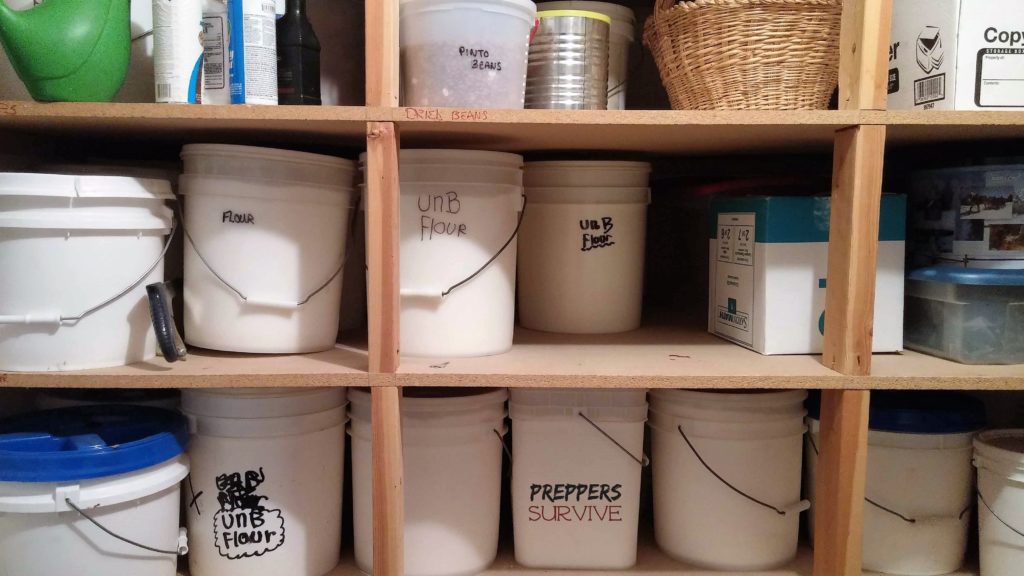
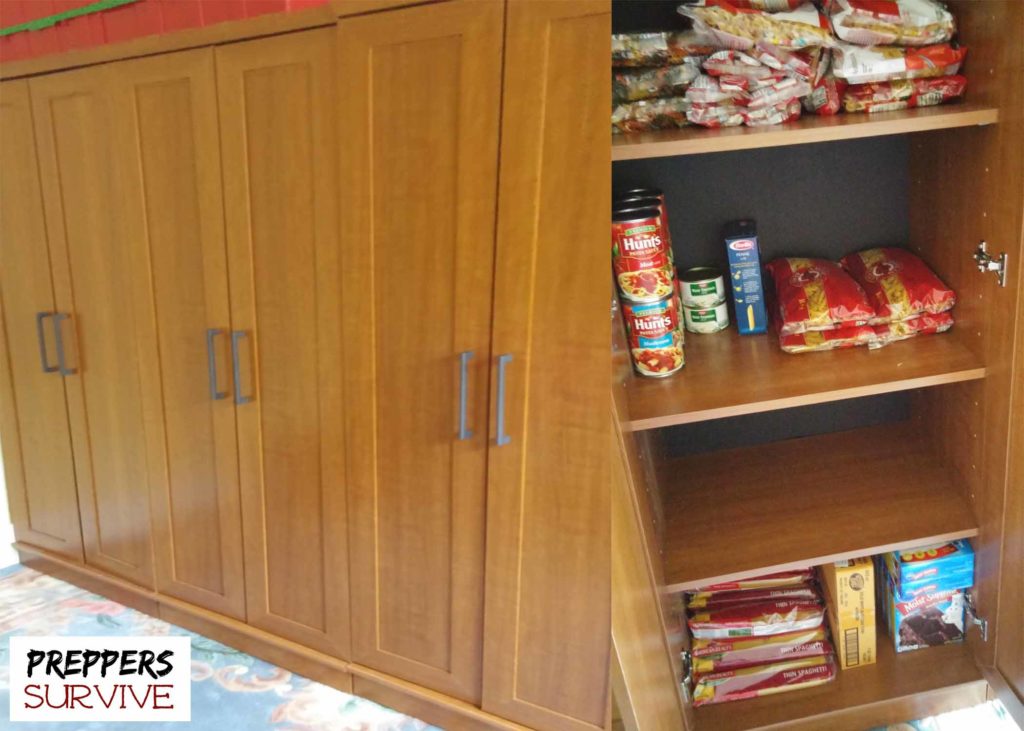
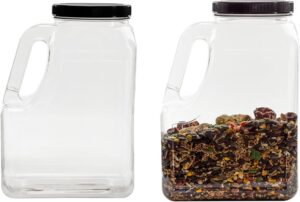
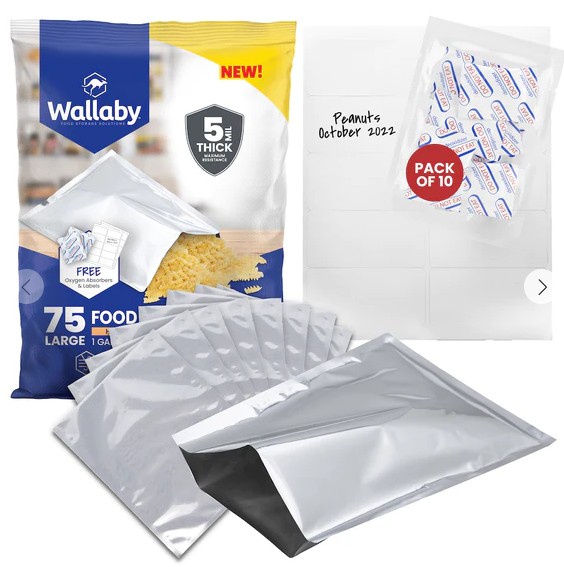
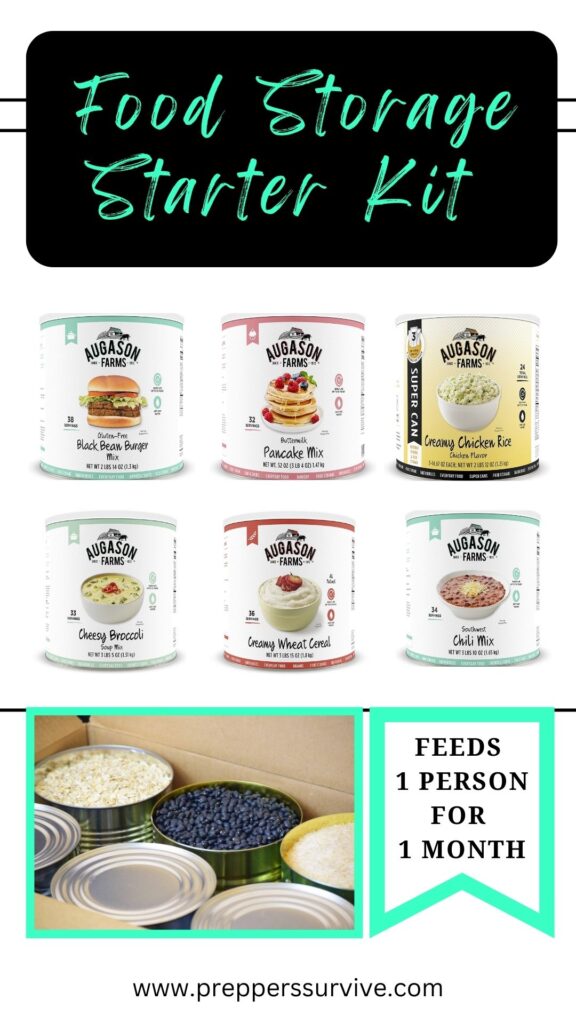
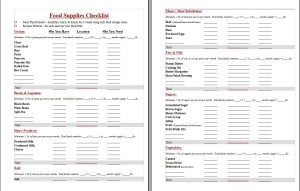
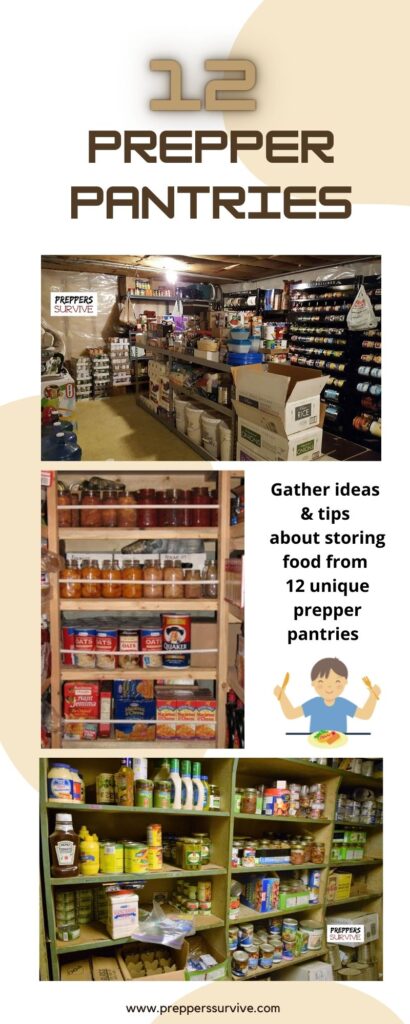
<3
thanks for sharing these!
Beautiful pantry to behold wish I had room for one that big
Excellent !!!!!
really enjoying reading here!
Nice preps! If you are storing in a basement, please make sure there is a stop check on your main sewer line so all of your hard work doesn’t end up floating in raw sewage. Building codes have required them for a while but you need to talk to a plumber and be sure.There are automatic stop checks ( good) and manual (best) available. Please check and spread the word. Love your site, Nettie. Thanks, Smitty
Thanks for the photos! It’s given me a few ideas;)